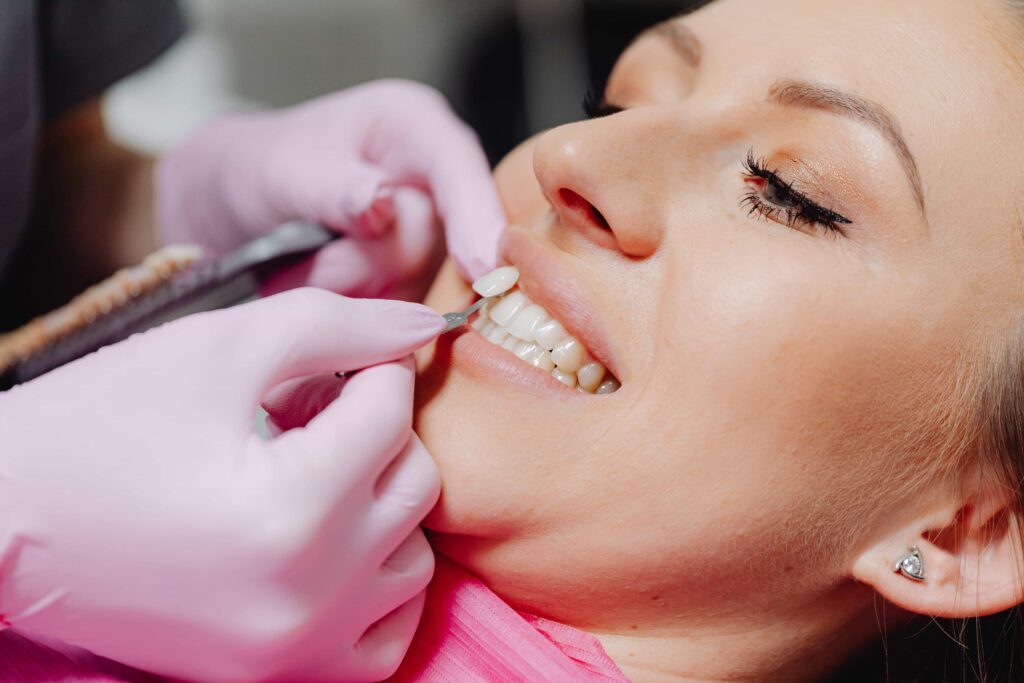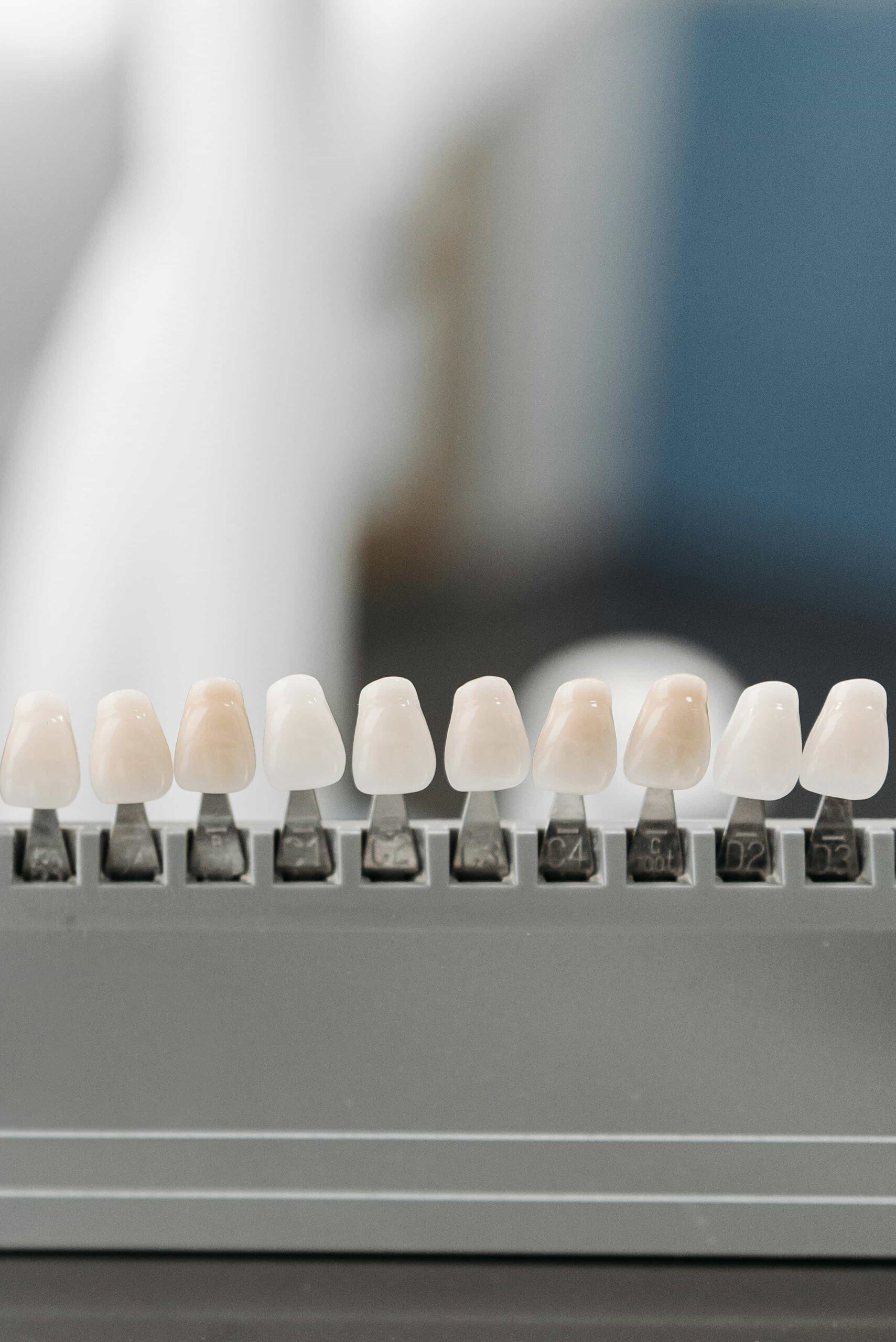Your enamel is the hardest substance in your body, but when it begins to wear down, it leaves your teeth vulnerable to sensitivity, discoloration, and even decay. Thinning enamel is a common concern, especially on the front teeth where it’s most visible. But the good news is there are ways to fix and protect thin tooth enamel to keep your smile strong and healthy.
This guide explains how to fix thin enamel on front teeth, why it happens, and how to prevent further thinning. Whether you’re already noticing the signs or want to proactively care for your teeth, read on for everything you need to know.
Key Takeaways
- Thinning of your tooth enamel can lead to various dental problems.
- Enamel restoration and protection is essential for maintaining good oral health.
- Regular dental check-ups and professional treatments are necessary for preventing enamel erosion.
- Proper oral hygiene, a balanced diet, and avoiding acidic food and drinks can help protect your tooth enamel.
- Consult an orthodontist who specializes in enamel restoration and protection to address any concerns or issues with your teeth.

What Causes Thin Teeth Enamel?
First, let’s discuss what exact causes your enamel to thin. Enamel is the hard, protective outer layer of your teeth that helps maintain their strength and appearance. When this layer wears down or becomes too thin, it exposes the softer inner layers of your teeth, which can lead to a variety of dental problems.
Here are some of the most common reasons why you may see your teeth thinning in the front:
- Acidic Foods and Drinks: Frequent consumption of soda, citrus fruits, and vinegar can erode enamel over time.
- Teeth Grinding (Bruxism): Grinding your teeth, often during sleep, can wear down the enamel, particularly on the front teeth.
- Poor Oral Hygiene: Plaque buildup can produce acids that weaken enamel.
- Genetic Predisposition: Some people naturally have thinner or weaker enamel due to genetics.
- Medical Conditions: Frequent acid reflux, bulimia, or dry mouth (xerostomia) can increase enamel erosion.
If you’ve noticed your thinning teeth front and center, it’s essential to address the root cause to stop further damage.
Signs of Thinning Tooth Enamel
Aside from physically seeing the thinning of your tooth enamel, there are other signs that you may be experiencing this issue.
These include:
- Tooth Sensitivity: Sudden discomfort when consuming hot, cold, or sweet foods and drinks.
- Discoloration: Teeth may appear more yellow as the underlying dentin becomes visible.
- Chipping or Cracking: Teeth become more fragile and prone to damage.
- Shiny or Smooth Surfaces: A sign that enamel is thinning due to erosion.
If you’re experiencing any of these symptoms on your front teeth, it’s a good idea to consult an orthodontic professional for an evaluation.
The Importance of Taking Action
Enamel does not regenerate since it doesn’t contain living cells. Once it’s gone, it’s gone. Fortunately, there are ways to restore function, strengthen your teeth, and prevent further damage.
With the right strategy, you can protect your smile from worsening sensitivity and the risk of dental decay. Here’s how to fix thin enamel on front teeth effectively.
6 Ways to Fix Thin Enamel on Front Teeth
If you’re dealing with thin enamel on your front teeth, it’s important to address the issue promptly. Strengthening and protecting your enamel can help preserve your dental health while maintaining a confident, radiant smile.
Below are six effective ways to tackle thin enamel and safeguard your teeth for the future.
1. Use Remineralizing Toothpaste
Specialized remineralizing toothpaste can help strengthen tooth enamel by restoring essential minerals like calcium and phosphate. Products containing fluoride are particularly effective at reinforcing weak spots.
Look for toothpaste labeled “enamel repair” or “pro-enamel” to protect and fortify your teeth.
2. Consider Dental Bonding
For front teeth with visible wear or discoloration, dental bonding is a popular cosmetic and protective fix. Dentists apply a tooth-colored resin to the affected teeth, covering thin or damaged enamel and restoring the appearance of your smile.
Bonding is ideal for minor enamel erosion and chipping.
3. Use Fluoride Treatments
Fluoride can strengthen enamel and reduce the risk of cavities. Dentists often recommend in-office fluoride varnishes or rinses you can use at home for extra protection.
Ask your orthodontist if you’re a good candidate for professional fluoride treatments.
4. Opt for Dental Veneers
For more severe thinning on the front teeth, dental veneers can be an excellent solution. Veneers are custom-made shells that cover the front surface of your teeth, providing both cosmetic and protective benefits.
They can mask discoloration, chips, and uneven textures caused by enamel loss.
5. Correct Teeth Grinding
If bruxism (teeth grinding) is causing your enamel to wear away, it’s essential to address the issue. Your dentist may recommend a nightguard to protect your teeth while you sleep. Other interventions, such as stress management techniques or jaw exercises, can help reduce grinding.
Reducing bruxism goes a long way in preventing further enamel loss.
6. Maintain a Tooth-Friendly Diet
Acidic foods and drinks can worsen enamel erosion. Cut back on soda, citrus fruits, and anything that might cause acid reflux.
Also, incorporate enamel-friendly foods into your diet, such as:
- Dairy products are rich in calcium.
- Crunchy fruits and vegetables like apples and celery stimulate saliva production.
- Plenty of water to rinse away acids and bacteria.
Remember to wait at least 30 minutes after consuming acidic foods before brushing your teeth to avoid further enamel damage.
Preventing Further Enamel Thinning
Fixing thin enamel is essential, but prevention is just as critical. Follow these tips to protect your enamel and keep your smile healthy:
- Use a soft-bristled toothbrush and brush gently to avoid abrasive damage.
- Floss daily to prevent plaque buildup and acid production.
- Replace your toothbrush every 3 months.
- Avoid biting into hard items like ice or pens that can chip enamel.
- Visit your dentist regularly for cleanings and checkups.
Taking these preventative steps can significantly reduce the risk of additional enamel weakening.
When to See an Orthodontist
If your enamel concerns are significant or you’re struggling with sensitivity and damage, it’s best to consult a professional orthodontist. Orthodontists can provide tailored solutions like bonding, veneers, or nightguards to protect your teeth.
They’ll also provide guidance on products and treatments to strengthen your teeth and avoid future issues.
Derek Damon Orthodontics
At Derek Damon Orthodontics, we understand the importance of healthy, strong enamel. That’s why we offer a range of services to protect and strengthen your teeth, from traditional braces to Invisalign clear aligners, and many other treatments for your oral health.
Our experienced team will work with you to create a personalized treatment plan that addresses your specific concerns and helps you achieve a beautiful, confident smile.
Contact us today to schedule a consultation and take the first step towards optimal oral health. Remember, taking care of your enamel now can save you from more serious issues in the future. So don’t delay – invest in your smile today!

FAQ
Q: How can you fix thin enamel on your front teeth?
A: There are multiple treatments available to address thin enamel on front teeth, including bonding, veneers, and crowns. These procedures involve applying a layer of tooth-colored material over the affected area to strengthen and protect the enamel.
Q: Can you reverse damage to your enamel?
A: While it is not possible to completely reverse damage to enamel, there are ways to prevent further damage and improve the overall health of your teeth. This includes practicing good oral hygiene habits, avoiding acidic foods and drinks, and using fluoride toothpaste or mouthwash.
Q: Is it important to take care of your child’s enamel?
A: Absolutely! The early years of a child’s life are crucial for the development and protection of their enamel. Parents should encourage their children to practice good oral hygiene habits, limit sugary foods and drinks, and schedule regular dental check-ups to monitor the health of their enamel.
Q: How does genetics play a role in enamel health?
A: Genetics can certainly play a role in the strength and health of our teeth, including enamel. Some people may be genetically predisposed to weaker or thinner enamel, making them more prone to tooth decay.
Restore and Protect Your Smile Today
Your smile deserves the best care, and addressing issues like thin enamel is an essential step in maintaining its health and beauty. If you’re wondering how to fix thin enamel on front teeth, our team is here to guide you with tailored solutions and advanced treatments that prioritize your dental well-being.
Don’t wait until small issues turn into larger concerns—reach out to us and discover how we can help restore and protect your smile today!
If you’re ready to take control of your dental health, consult a professional who specializes in enamel restoration and protection. We’re here to help you achieve the smile you deserve. Schedule your consultation today!

